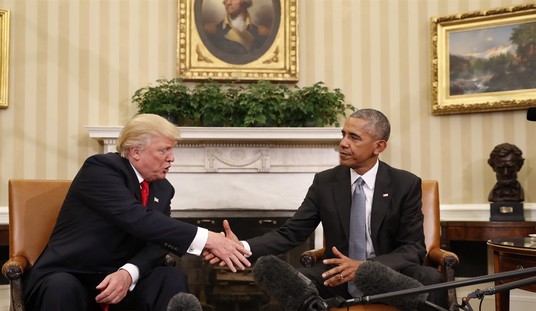The news stories over the past two weeks have been divided into two tracks. One dealt with matters of high policy: the arms control summit, political developments in foreign countries — the Chinese yuan, nuclear defiance in Iran — matters dignified and weighty. The second track, existing almost in a parallel universe, was the world of upheaval: instability in Kyrgyzstan, the Red Shirts in Thailand, and above all the Tea Parties in Washington. One universe is formal, almost ritualistic. The other chaotic, dimly perceived and street-theatrical.
Both universes are alike in that neither is predictable. Both both are important. Sometimes their importance is recognized belatedly. Journalistic observers believed until fairly recently that the Red Shirts were simply a flash in the pan. Now they are not so sure. The WSJ j writes: “Until last Saturday, the protest had a festival feel and was spectacularly nonviolent. Clearly this is a mass movement expressing a deeply felt demand for change. The government and military now face the prospect that any attempted coup or renewed violent oppression could trigger a far larger show of popular support for the protests.” They might have been talking about the Tea Parties, though the two are very different.
But they are alike in that both were poorly understood, almost dismissed, within the circle of formal news. Like the Red Shirts, after ignoring the Tea Parties for months the MSM is now realizes they’re significant, although they don’t know why, or won’t admit they know why. The NYT still clings to the notion that the Tea Partiers are half-baked people muddled ideas. It asks: ‘You’re against big government are you? But don’t you want your Social Security?’
Some defended being on Social Security while fighting big government by saying that since they had paid into the system, they deserved the benefits.
Others could not explain the contradiction.
“That’s a conundrum, isn’t it?” asked Jodine White, 62, of Rocklin, Calif. “I don’t know what to say. Maybe I don’t want smaller government. I guess I want smaller government and my Social Security.” She added, “I didn’t look at it from the perspective of losing things I need. I think I’ve changed my mind.”
But the sneer is unconvincing. Probably because governmental promises themselves are unconvincing. Today the city of LA mooted bankruptcy after realizing it couldn’t afford to pay its public sector pensions. So they’re considering winding up their assets so they can be quit of their promises. “Could declaring bankruptcy be the answer to the city’s woes? Or is it an empty promise that will make it harder for City Hall to keep the city running? Should elected officials make the hard decisions themselves or cede control over to a bankruptcy court?” Even the NYT must realize that government isn’t a magical money machine which mints pensions or social security. The gibe can be turned on its head: may the NYT explain the contradiction between government bankruptcy and Social Security?
Contradiction: that’s the point. Underneath the pageantry of the Obama summit and the glamor of international diplomacy is a world in turmoil. Things are falling apart; huge tectonic clashes are taking place. The apparent disconnection between these two universes conceals their intimate linkage. It’s possible that six months from now the news cycle is going to be dominated by Tea Party type news. And it will be a surprise, mostly because the news receptors are having trouble combining the high frequencies — the world of presidents and conventional news events — alongside the drumbeat from below. Those low frequencies are amplifying even more basic things: the trends which have long been gnawing at the foundations but have only recently found a voice; and are only recently being noticed. These are things like demographics, energy prices, the dysfunctional memes: all the boring stuff which can’t make it “above the fold” but which actually turn the world. These subclinical are all exercising a distorting influence on the front page. How long before they become the full-blown headline?
Who knows? But when it happanes it’s probably that the NYT editors will be as surprised as the next person when they write a headline that was inevitable yet wholly unexpected. The two interesting things about nearly every big crises — like the fall of the Soviet Union, the global financial crisis, even the World Wars — is they were both largely unexpected and obvious in retrospect. The signal was always there; just filtered out. In the case of elites facing an upheaval from the grassroots the failure to receive the signal is simple: it’s because the message of the drumbeat was that the low frequency receptor was broken. It’s like trying to send an email complaining that you’ve lost connectivity.
One of the biggest challenges facing movements which want to rewire their societies without breaking them is finding ways to create communications channels to flank the blocked nodes as an alternative to scrapping the old system and building a new one. This is sometimes done by using a parallel institution of legitimacy to supplement the sclerotic system. The prominent role of Islam or the Catholic Church or the monarchy in midwifing reforms in foreign countries occurs precisely because a society can “roll back” to an older mode while it implements the fix. During a time of crisis the fallback systems become very important.
One of the weaknesses of a multicultural society is that it destroys the shared culture or conventions which are the rollback states of a failed transaction. Once the formal system fails there is no autopilot mode. It’s every man for himself. The hidden cost of “diversity” is that it requires more energy to hold together than a relatively homogenous society in times of crisis.
Be that as it may, in a time when free energy is abundant — lots of jobs, savings and productivity — the energy is available to deal with disruptions. But the characteristic of upheavals is that they are correlated with declines in the design margin. They tend to happen when the reserves of free energy are low or nonexistent. All things being equal it is better to face a crisis as soon as possible rather than to wait until things get so bad that no reserves are left to deal with it. One of the unappreciated advantages of a democracy is that it forces, through elections, a minor crisis of government every two years followed by a slightly greater one every four. It forces people to fact problems, at least partially, in bite-sized chunks. The reason why States of Emergency are so damaging is that they postpone the crisis until it is too late. And then the fix becomes too radical because left for too long.
Viewed from that perspective the greatest contribution of the Tea Parties — and their connection to high frequency events like nuclear security — is that they’ve forced the frame of political questions in terms of the underlying trends instead of the shrill, tinny tones of the capital. The Tea Parties are the voice of the obvious. As grassroots organizations they are uninterested in inside baseball or who gave what cocktail for whom in Georgetown. They are base drums; insistent, rhythmic and foundational. That’s their role. But the unanswered question is how the Tea Parties are going to use the political system to create alternate signal pathways to outflank the blocked systems. They have to perform the neat trick of using the existing systems of authority without being co-opted by them. They have to remain framers of the message without being sucked into the wheely-dealy world of working poltics, not for moral reasons primarily, but for signal clarity considerations. If they can’t then the crisis gets delayed, and the solution gets more drastic and that’s not good.
There’s no guarantee they’ll succeed. But it’s clear that they are going to try.










Join the conversation as a VIP Member